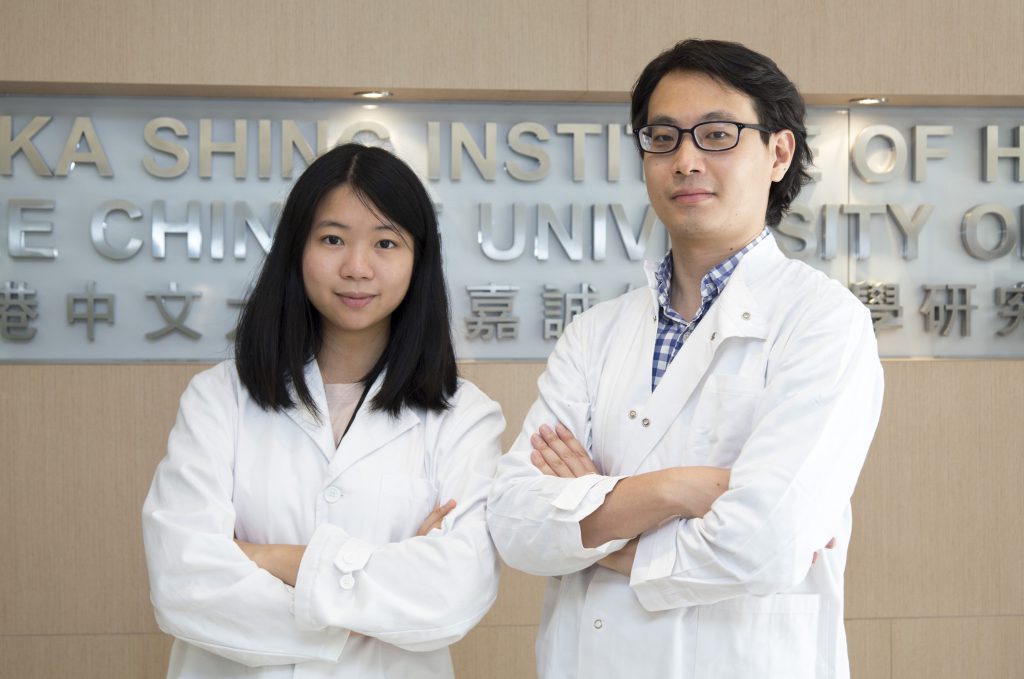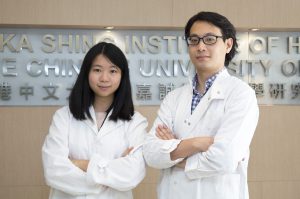CUHK
News Centre
CUHK Study Suggests a Standardised Experimental Setup is the Key to Optimise Performance of COVID-19 Nucleic Acid Tests
To ensure the accuracy and consistency of diagnostic tests for COVID-19 is an important aspect in effective disease control. The Faculty of Medicine at The Chinese University of Hong Kong (CU Medicine) systematically evaluated the performance of three common nucleic acid tests, namely digital Polymerase Chain Reaction (dPCR), quantitative Polymerase Chain Reaction (qPCR), and loop-mediated isothermal amplification (LAMP), for the diagnosis of COVID-19 in hospital and clinics. Results demonstrated that though dPCR is the most sensitive type of test, followed by qPCR, and then LAMP, there was no significant difference in the accuracy or consistency among the three types of test. Instead, researchers found that the specimen types and RNA extraction methods should be the focus in optimising the tests performance. The findings have been published in the international prestigious journal The Lancet Microbe.
PCR as the current gold standard while LAMP emerging as alternative for rapid COVID-19 test
PCR is the most widely used diagnostic method for COVID-19 infection worldwide. Referred to as qPCR or RT-PCR, the technology is highly sensitive and considered the gold standard for coronavirus screening. In Hong Kong, PCR is the type of nucleic acid test being offered in government recognised COVID-19 testing institutions. dPCR is a novel technology developed to facilitate the diagnosis of COVID-19 that allows absolute quantification of nucleic acids in hospitals and diagnostic centres, meaning physicians can extract more information from its superior sensitivity.
LAMP test is gaining popularity as a rapid test which can yield results within an hour, as opposed to the four- to six-hour minimum return currently required for a PCR test. It has emerged as a popular alternative to qPCR in rapid testing environments such as airports and testing centres worldwide. Researchers’ findings showed that LAMP is a time-saving and reliable testing technique comparable to the currently used PCR test. The application of LAMP in mass-screening will mitigate the bottleneck of PCR testing in Hong Kong.
Professor Peter Pak Hang CHEUNG, Assistant Professor of the Department of Chemical Pathology and Investigator of Li Ka Shing Institute of Health Sciences at CU Medicine said, “We believe it is of great importance and urgency to conduct a comprehensive review that systematically compares all common nucleic acid tests and accounts for different experimental setups”. The three tests have been evaluated individually in cohort and trial studies using clinical samples. Interestingly, experimental setups affect virus detection accuracy more so than assay types.
Pharyngeal swabs should remain the gold standard for diagnosing COVID-19
The research team included 66 studies (11 dPCR, 32 qPCR, and 23 LAMP) with 15,017 clinical samples in total in their systematic review and 52 studies in meta-analysis. Below are the key findings:
- dPCR is the most sensitive, followed by quantitative qPCR and LAMP
- High sensitivity of dPCR agrees with the extremely low and consistent detection limits of the test
- In the subgroup analysis for specimens, all three tests using pharyngeal swabs consistently show higher sensitivity and accuracy than saliva
- The three nucleic acid tests using open reading frame 1ab primer outperform the same tests using nucleocapsid primer
- All RNA-extracted samples result in a more accurate test performance than crude samples regardless of which RNA extraction method is applied
Professor Cheung explained, “We observed that when controlling the experimental setup of each test by specifying the primer- probe set, RNA extraction, and specimen type, the accuracy estimated did not differ across different nucleic acid tests. However, significant variations in accuracy were observed when the experimental setup was changed. This implies that optimisation efforts should be directed towards designing a robust and consistent experimental setup as the accuracy of SARS-CoV-2 nucleic acid tests is more strongly dependent on the experimental setup than on the type of test used.”
“Our results also agreed with US Centers for Disease Control and Prevention and WHO’s recommendations to use pharyngeal swabs over saliva. Overall, the three nucleic acid tests performed the most accurately and consistently with pharyngeal swabs using SARS-CoV-2 open reading frame 1ab primer with RNA extraction. Our study suggests that the test type can be selected according to the environmental and socioeconomic requirements, as long as the optimal experimental setup is implemented and standardised,” he added.





